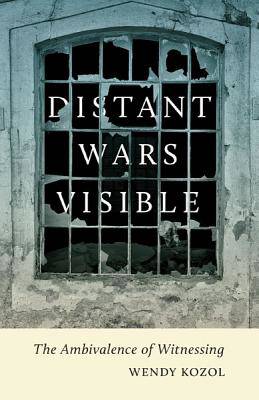
- Afhalen na 1 uur in een winkel met voorraad
- Gratis thuislevering in België vanaf € 30
- Ruim aanbod met 7 miljoen producten
- Afhalen na 1 uur in een winkel met voorraad
- Gratis thuislevering in België vanaf € 30
- Ruim aanbod met 7 miljoen producten
Omschrijving
In our wired world, visual images of military conflict and political strife are ubiquitous. Far less obvious, far more elusive, is how we see such images, how witnessing military violence and suffering affects us. Distant Wars Visible brings a new perspective to such enduring questions about conflict photography and other forms of visual advocacy, whether in support of U.S. military objectives or in critique of the nation at war.
At the book's center is what author Wendy Kozol calls an analytic of ambivalence--a critical approach to the tensions between spectacle and empathy provoked by gazing at military atrocities and trauma. Through this approach, Distant Wars Visible uses key concepts such as the politics of recoil, the notion of looking elsewhere, skeptical documents, and ethical spectatorship to examine multiple visual cultural practices depicting war, on and off the battlefield, from the 1999 NATO bombings in Kosovo to the present.
Kozol's analysis draws from collections of family photographs, human rights photography, independent film production, photojournalism, and other examples of war's visual culture, as well as extensive visual evidence of the ways in which U.S. militarism operates to maintain geopolitical dominance--from Fallujah and Abu Ghraib to the most recent drone strikes in Pakistan.
Throughout, Kozol reveals how factors such as gender, race, and sexuality construct competing visualizations of identity in a range of media from graphic narrative and film to conflict photography and battlefield souvenirs--and how contingencies and contradictions in visual culture shape the politics and ethics of witnessing.
Specificaties
Betrokkenen
- Auteur(s):
- Uitgeverij:
Inhoud
- Aantal bladzijden:
- 280
- Taal:
- Engels
- Reeks:
Eigenschappen
- Productcode (EAN):
- 9780816681303
- Verschijningsdatum:
- 15/11/2014
- Uitvoering:
- Paperback
- Formaat:
- Trade paperback (VS)
- Afmetingen:
- 154 mm x 215 mm
- Gewicht:
- 326 g

Alleen bij Standaard Boekhandel
Beoordelingen
We publiceren alleen reviews die voldoen aan de voorwaarden voor reviews. Bekijk onze voorwaarden voor reviews.











